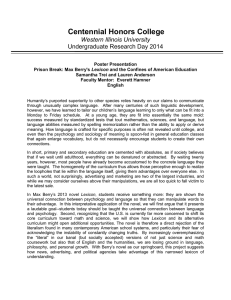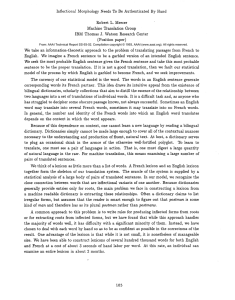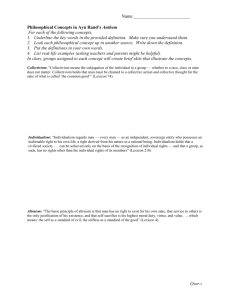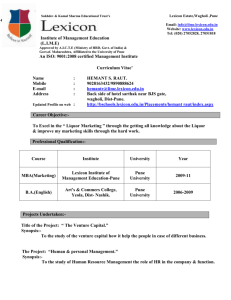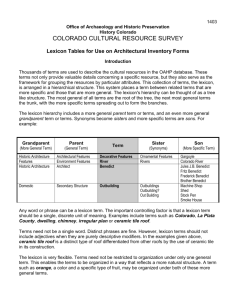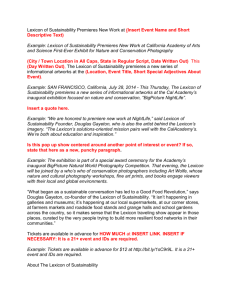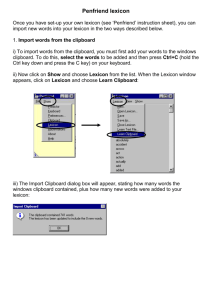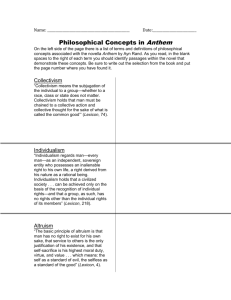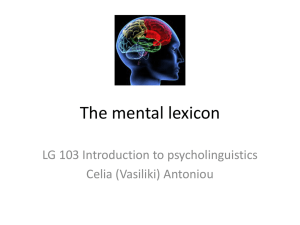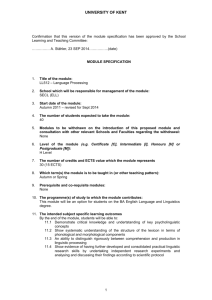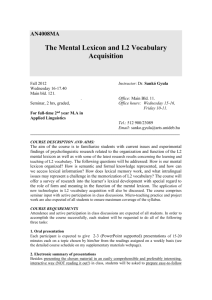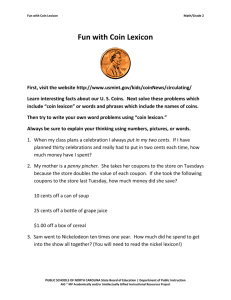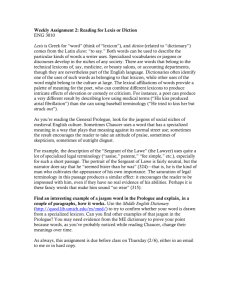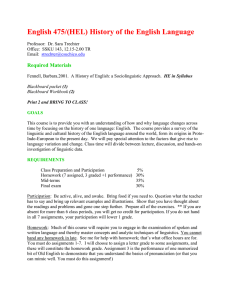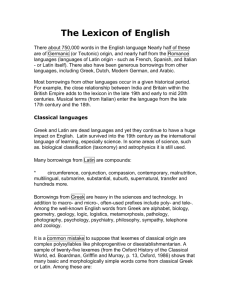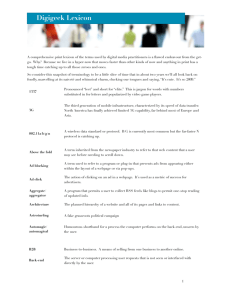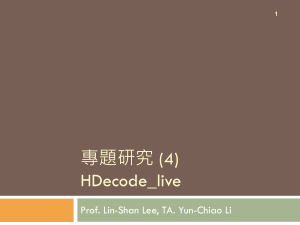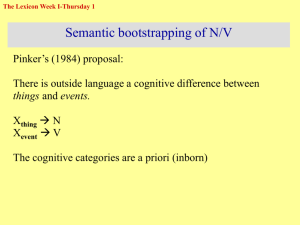Lexicon
advertisement
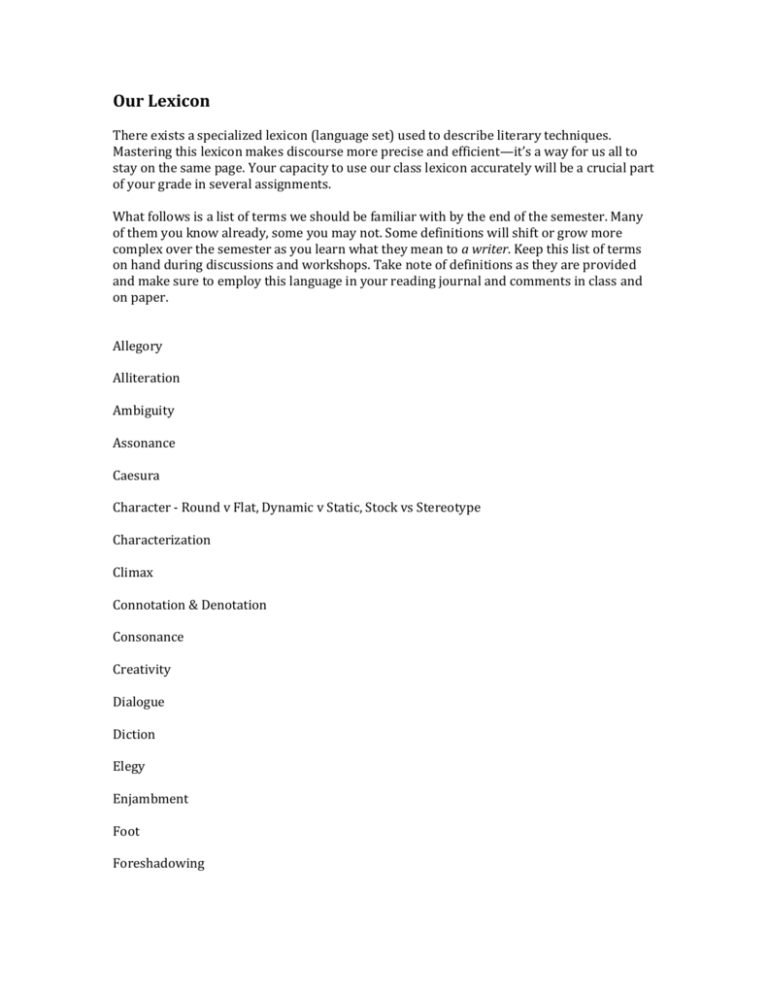
Our Lexicon There exists a specialized lexicon (language set) used to describe literary techniques. Mastering this lexicon makes discourse more precise and efficient—it’s a way for us all to stay on the same page. Your capacity to use our class lexicon accurately will be a crucial part of your grade in several assignments. What follows is a list of terms we should be familiar with by the end of the semester. Many of them you know already, some you may not. Some definitions will shift or grow more complex over the semester as you learn what they mean to a writer. Keep this list of terms on hand during discussions and workshops. Take note of definitions as they are provided and make sure to employ this language in your reading journal and comments in class and on paper. Allegory Alliteration Ambiguity Assonance Caesura Character - Round v Flat, Dynamic v Static, Stock vs Stereotype Characterization Climax Connotation & Denotation Consonance Creativity Dialogue Diction Elegy Enjambment Foot Foreshadowing Found Poem Image Line & Line fold Metaphor Motif/Theme Ode Plot Point of View (1st, 2nd, 3rd limited, close, and omniscient) Rhyme (Full/Slant, End/Internal) Rhythm Rising/Falling Action Setting Simile Sonnet Stakes Stanza Syllable & Syllabic Verse Symbol Syntax Tone Voice


